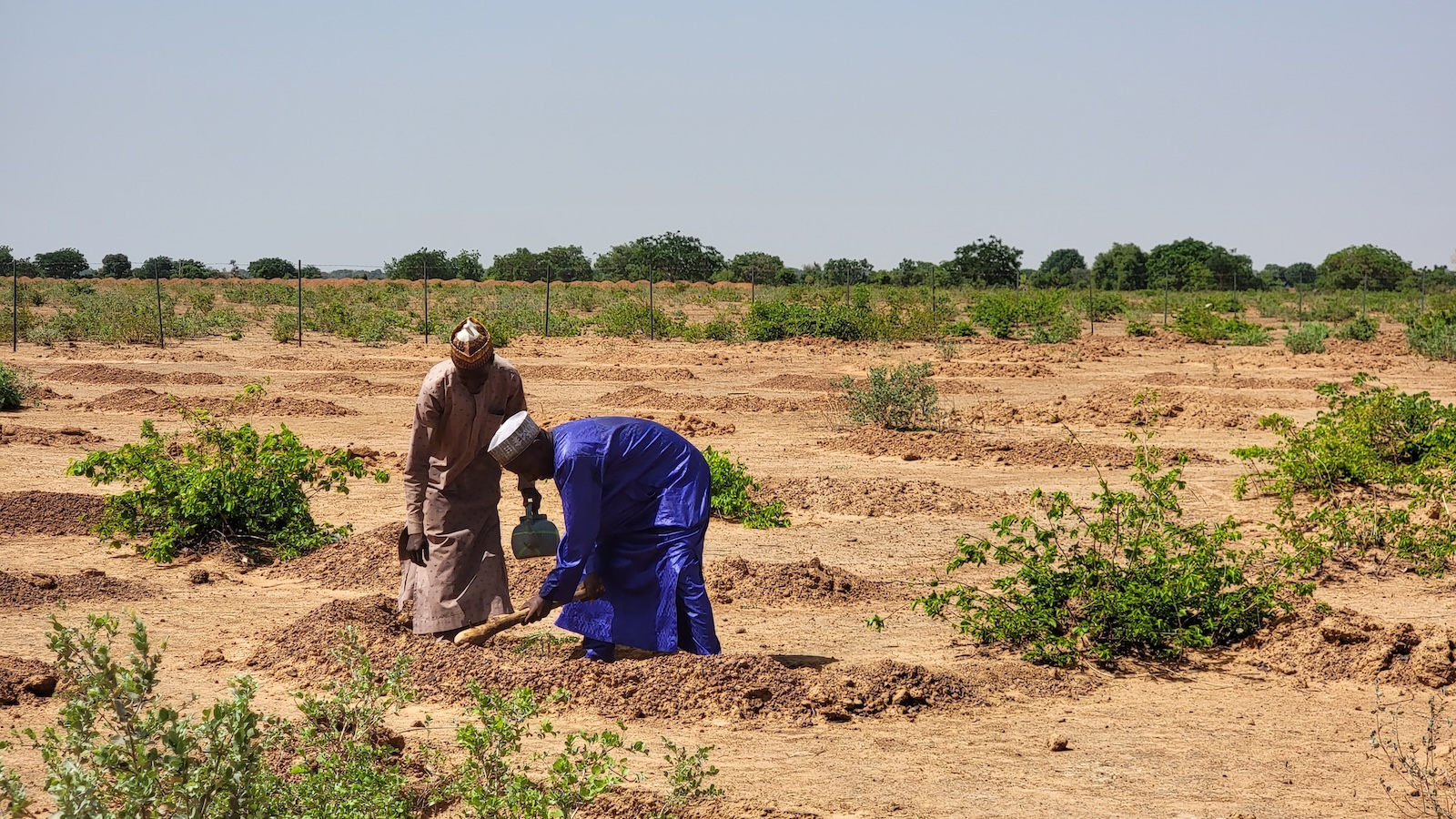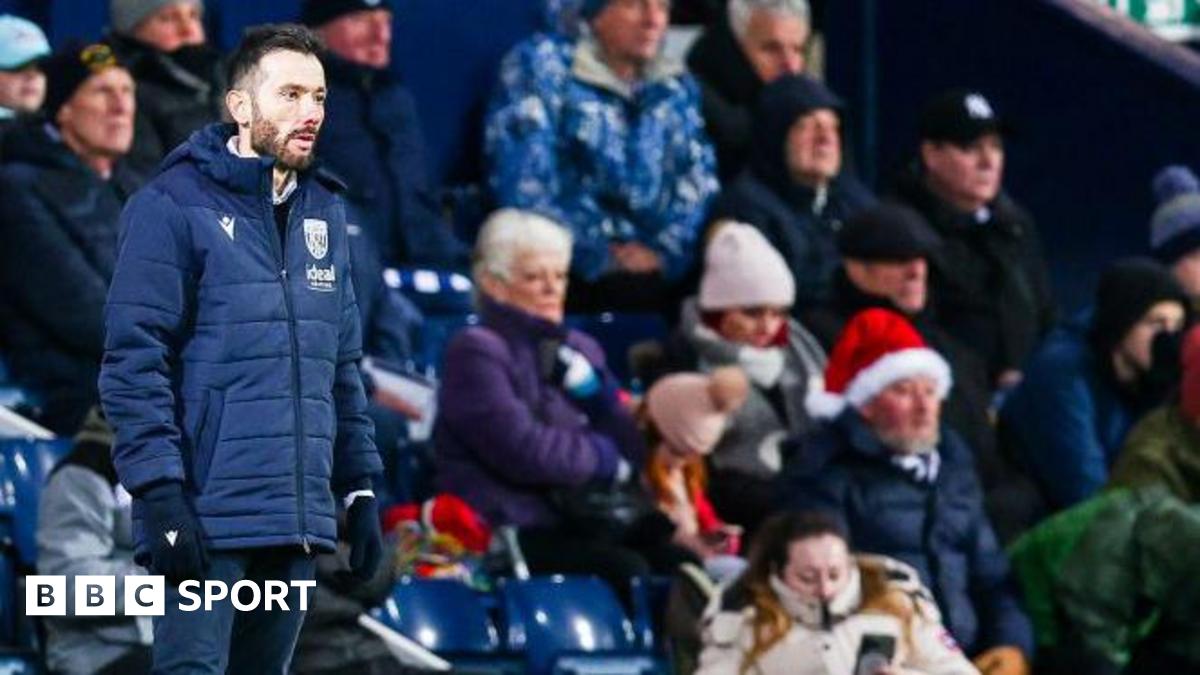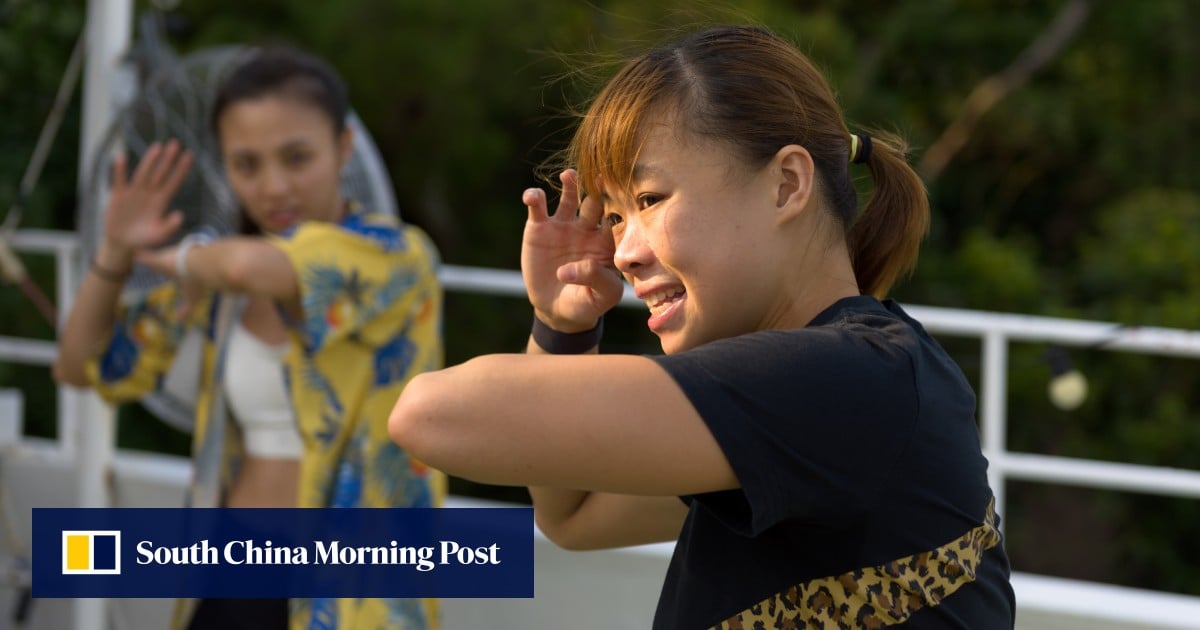World
Runner’s World Shoe Awards 2024 – Trail Shoes

It doesn’t matter if you’re an off-road newbie or you’re training for your tenth ultramarathon—trail miles just hit different than runs on the pavement. And when you escape the streets and sidewalks, you’ll want to make sure you’ve got shoes on your feet that can handle the rougher terrain.
The shoes on this list are the top performers across a variety of trail conditions. We tested them everywhere from the soft and muddy canal paths just outside our Pennsylvania headquarters to twisty singletrack racecourses in Europe. If you need a durable shoe with top-notch traction—or just enough versatility to handle that stretch of blacktop before you reach the trailhead—you’ll find a new off-road companion here.
Our staff and team of 300 local wear-testers ran in and evaluated more than 100 new models to determine the best running shoes so far this year. After logging at least 100 miles in each pair, analyzing the data collected in our shoe lab, and reviewing hundreds of feedback surveys from our test team, we made our final selections.
We divided 2024’s winning pairs into three main categories: Trail, Race, and Train. Below are our picks for the year’s Best Trail Shoes, links to longer shoe reviews, and more info on our 2024 Award Winners.
Merrell Morphlite
Most of us won’t—and probably shouldn’t—pick the Morphlite to race a road marathon. But this past St. Patrick’s Day, 10,000-meter Olympian Alexi Pappas crushed the 2024 Los Angeles Marathon in this budget road-to-trail shoe. And it wasn’t just luck. At the Boston Marathon, she wore the shoe again to guide Lisa Thompson (also wearing the Morphlite) to a first-place finish in the T13 division.
Where the shoe really shines, though, is for runners who want high versatility and low price point. Test yourself over a variety of terrain and events in the Morphlite, and invest in a designated shoe once you decide where you’ll spend most of your training miles.
Of course, that’s only if you want to. Road and trail chameleons, like tester John Krumenacker, found the lugs shallow enough to nearly disappear on road and treadmill runs, but still grippy for groomed trails. “I travel for my job, and it’s my little bit of enjoyment to pack these shoes and know I’ll be sure-footed wherever I end up,” he said. “Now, they will slip a little if you really get into it on wet terrain and really technical singletrack. But they stick to gravel without sinking in too much and grip dirt and light mud well.”
Between your foot and that nubby rubber is Merrell’s most premium FloatPro midsole. At the end of the day, it’s just basic compressed EVA foam. There’s little razzle dazzle, but it is reliable and durable. None of our testers raised a red flag for early wear after 100 miles.
“Support and security are not this shoe’s strengths. I wanted to really wrench down on the laces to get the shoe snug over my midfoot,” Krumenacker added after grappling with the upper on a trail eight-miler. “Relacing in favor of a bit looser, more relaxed fit seems to work best.”—M.P.
Salomon Genesis
As always with Salomon’s development process, this shoe started with an S/Lab model. The S/Lab Genesis was a surprise release in 2022, when Mathieu Blanchard placed second at Ultra-Trail du Mont Blanc, and it quietly appeared on Salomon’s website that same week. It’s a quirky, chunky-looking trail shoe with a noticeably thicker midsole than we had seen from Salomon prior, with deep lugs, and foam blocks on the outside of the heel and inside the arch. Having recognized it from the race’s livestream, I bought a pair right away. It quickly became my go-to for ultra races in 2023, including my second finish of Tor des Géants.
This shoe, the Genesis, non-S/Lab, is the trickle-down trainer that carries some of that philosophy into a more reasonable, and more affordable, trail trainer. It keeps the thicker protective toe cap and durable Matryx knit upper. Matryx has come a long way since early versions of the material we knew in Hoka EVO Speedgoat and EVO Mafate shoes. It’s still stiff, but far more comfortable than the earlier versions, while still abrasion-resistant on technical trails. It’s also a fantastic material if you have to deal with water crossings, as it doesn’t absorb much water into the fibers, and the knit allows moisture to escape the shoe.
The midsole softness of the S/Lab doesn’t translate to this model. That should, however, make the Genesis a more durable trainer than its race-day-oriented predecessor. The firmer midsole doesn’t compress as much over time, so it maintains a similar on-the-run feel as you stack up miles. It feels very stable on technical terrain and around tight turns. Your foot sits down into a scooped-out boat of midsole foam, preventing the tippy feeling that you sometimes find in shoes with thicker stack heights. The Genesis also gets a similar set of “bumpers” along the sides of the shoe, for added protection against rock strikes.
Both years I ran Tor des Géants, I started the race in a pair of Salomons. This year I was in the Genesis. The Contagrip rubber outsole was what really made the shoe capable in some of the race’s technical conditions. (Generally, Salomon’s Contagrip rubber is most reliable in slightly wet dirt or on dry, textured rock. But in deeper mud or on slick boulders, it can lose its bite.) During Tor des Géants, the Genesis gripped the dry, dusty rocks at high elevation as we climbed alpine passes in excess of 30 percent, and ran down equally steep descents.
Plus, there’s less space between the lugs on the Genesis’s outsole compared to its S/Lab sibling. I found this pattern is more comfortable on road-to-trail runs in everyday training.—Pat Heine-Holmberg
Topo Athletic MT-5
The practical MT-5 has the simple essentials entry-level trail runners need, without any bells and whistles to fuss over. Topo Athletic increased the stack height from 25/22mm to 28/23mm, which means more cushioning and protection underfoot, and also makes the shoe more accessible for runners wary of nearly zero-drop shoes. Topo shaved down the lugs for a less aggressive outsole. During a 10-miler on a mixed cinder, dirt, and cement path, I still felt confident throwing in a few surges over the patches of icy snow. The shoe makes you feel nimble, thanks to its light weight and the absence of a rock plate—I could feel more flex through my forefoot.
“The MT-5 has a smooth ride, and you don’t really notice the tread when running on roads,” said tester John Parks. “With the snow we had, the MT-5 gave me better grip when cornering compared to Altra’s Outroad 2, another hybrid shoe I have tested.”—A.F.
Inov8 Trailfly Speed
When it comes to running shoes, the surest way to my heart is not super foam or carbon fiber—it’s an anatomical toebox. And not many running shoe companies make them; Altra and Topo Athletic are among the few brands to offer that wide, splay-friendly foot shape. But you can now add Inov8 to the list.
The challenge in pairing that more generous toebox with a shoe designed for speed is ensuring that it still feels secure. Too much wiggle room in a racing shoe feels sloppy and can slow you down. For that reason, some race-specific shoes nearly overcorrect with snug, low-volume uppers. They lock in the foot for a go-fast feel, but can be constricting. Inov8’s solution is what it’s calling a Met-Cradle. On top of the single layer of air mesh, thick bands connect the midfoot to the heel, cinching down the fit when you tighten the laces.
Underfoot, the midsole is a one-two punch of EVA. Inov8’s new foam, called Powerflow Pro, and rock plate are both made from the material, with the plate using a denser formulation. On its own, that ride would be too harsh for the rocky terrain this shoe is made for. So Inov8 pairs it with a soft but not quite squishy insole made from hundreds of expanded TPU beads, like Adidas’s Boost material. “It’s not a big, plush ride,” said RW senior photographer Trevor Raab of the midsole material. “It’s definitely firm, leaning minimal. Coming from more-cushioned road shoes, I personally could use a slightly softer ride.”
Another runner who has tested 24 different running shoes remembered Inov8’s outsole above all others. The graphene-infused rubber, which has the tacky grip of soft rubber plus the harder-wearing properties of hard rubber for durability, outshone every other aspect of the shoe. “The traction on these is phenomenal. I actually wore these to shovel snow before my run and never slipped, not even on soft and muddy ground. Just for fun, I wore them on the treadmill—felt almost like I was sticking to the belt,” she said.—M.P.
Altra Timp 5
At The Running Event, an annual convention held in Austin, Texas, at the end of every year, Altra cofounder Brian Beckstead told RW that the Timp 5 underwent a major makeover, setting it apart from all previous Timps: It’s runnable. Well, more runnable. According to Beckstead, runners tended to favor past Timps for hiking over running—the macho exterior was a turnoff for some. The Timp was already metamorphosing with iterations 3 and 4, and our testers noticed the significant shifts from 4 to 5.
“This is my new favorite shoe,” said tester Jason Karpinski, who ran the Black Canyons 100K wearing the Timp 5. “Plenty of toe room, but my foot was not sliding all around. Good temperature regulation combined with fast drainage allowed for all-day comfort.”
This version is more than an ounce lighter than the Timp 4 (10.7 oz), due to its streamlined upper with lower exterior sidewalls. Altra added stickier Vibram Megagrip rubber to the outsole and more responsive Ego Max midsole foam. At its lightest and most rugged yet, the Timp 5 still doesn’t skimp on energy return.—A.F.
Scarpa Golden Gate 2
What’s Italian Shoemaker Scarpa doing with a shoe named after a famous San Francisco landmark? Zoom in on the upper. Steel trusses on the Golden Gate Bridge inspired those protective overlays—both are designed for strong structural support at the lightest weight possible. And that’s what we like most about the shoe’s second version: It’s dropped nearly a full ounce from its predecessor, and remains just as stable and sturdy.
Those strips, made from bio-based TPU, also help shield you from rocks and moisture—which you’ll need if you push this shoe across the variety of terrain it’s made for. One tester had enough traction to scramble over snowy crags and peaks in Colorado. There’s just exposed foam without lugs or rubber on a portion of the outsole’s medial side. As a result, it still rode smoothly when she was back on city sidewalks.
Another tester, who used the shoe for speedwork and a handful of 10- to 14-milers, added, “The traction was as good as, if not better than, my Saucony Peregrines and Inov8 Trailflys. They definitely handled leaves better than the Altra Lone Peak.”
Though the Golden Gate is Scarpa’s most cushioned shoe, it’s still firm. You don’t get a squishy soft midsole here—just two simple layers of EVA foam. The firmer, denser layer is closest to your foot, and that’s what you’ll feel most prominently. After a weekend of two 20-plus-milers on rocky racecourses around Gring’s Mill and Blue Marsh Lake in Pennsylvania, one tester said she had enough protection underfoot to wear the shoes for a 50K—“maybe even a 50-miler”—and feel confident. That is, if Scarpa adds a little more comfort up top.
“The tongue and ankle collar were a little stiff and could have been softer. The material did not stretch too much anywhere, and I would notice that during hill ascents,” said a tester who annually competes in challenging ultras like World’s End and Black Forest. For grueling races like those, she’d especially want “a little more soft padding.”
We found that the toebox is also a lot rounder than the first version. With our test samples side-by-side, you can see the change before you even slide the shoe on to feel it; the first model visibly tapers more around the pinky toes. Scarpa also slightly lengthened the last overall. Still, even with this extra room, you’ll want to go up a half size in this shoe.—M.P.
The North Face Summit Vectiv Pro 2
The Summit Vectiv Pro v1 was a big step forward for trail super shoes. The North Face had already been putting plates in its shoes for a hot minute, but they were often combined with legacy foams, so you didn’t really get that pop like you do in a road racer. When the Summit Vectiv Pro brought PEBA midsole foam to the mix, it felt like a true super shoe experience finally came to the trails. However, there was one major problem: the carbon-fiber plate.
That plate sits directly underneath the sockliner, and features two wings that stick out and run down the side of the midsole to add stability during toe-off. On v1, the upper was so thin that when my foot compressed the midsole during my stride, my foot would roll into where the plate came over the edge of the foam, and it would cause blisters on the base of both of my big toes. I saw other runners on social media bringing up the same sore spot. Eventually, I took the shoe down to our colleagues at Popular Mechanics and cut that piece of the plate off, to instant relief. It made the shoe perform like I was hoping it would, and became one of the best ultra race shoes out there, though it is a bummer to have to take power tools to a $250 shoe.
For the shoe’s second iteration, the smallest update makes a world of difference. What’s new on the Summit Vectiv Pro 2 is the upper material. It’s a slightly thicker knit mesh than the first version, and it’s the first time “just an upper” change has gotten me so hyped. On this shoe, that small increase in thickness between your foot and the carbon-fiber plate’s wings makes a huge difference. The hot spots are gone.
Running in the shoe is smooth; the rocker gets more extreme toward the forefoot so you can feel some acceleration as your stride progresses. The cushioning that runners are familiar with from road super shoes is there, and as the miles add up, I can feel that my legs are fresher than with firm midsoles.
With the plate issue being resolved, I can feel the wings working the way they were intended on winding or moderately technical trails. Note that the plate—and plated shoes in general—can feel too stiff for really rocky terrain. If you catch a rock with the edge of the shoe, the plate can still press into the upper enough to poke your foot.—P.H.H.
More of the Best Shoes of the Year
Amanda is a test editor at Runner’s World who has run the Boston Marathon every year since 2013; she’s a former professional baker with a master’s in gastronomy and she carb-loads on snickerdoodles.
Jeff is Runner-in-Chief for Runner’s World, guiding the brand’s shoes and gear coverage. A true shoe dog, he’s spent more than a decade testing and reviewing shoes. In 2017, he ran in 285 different pairs of shoes, including a streak of 257 days wearing a different model.





























